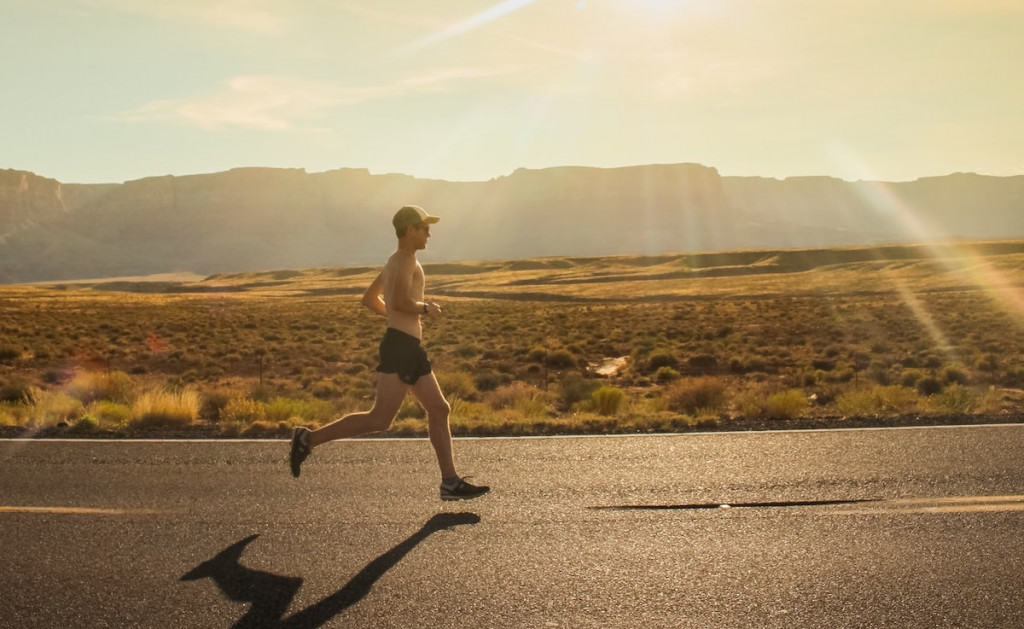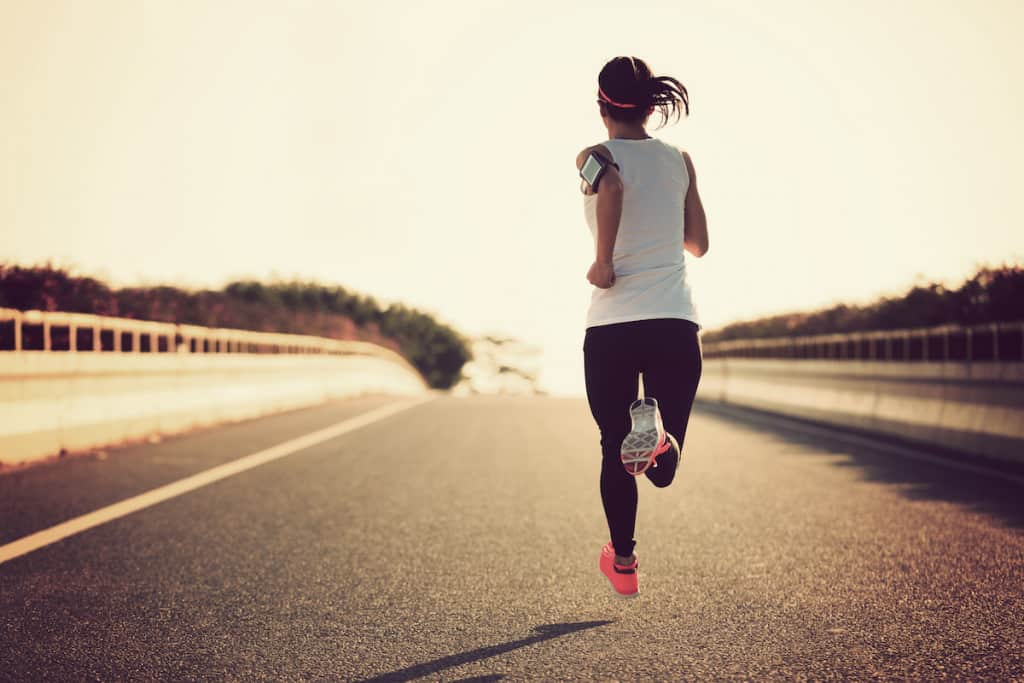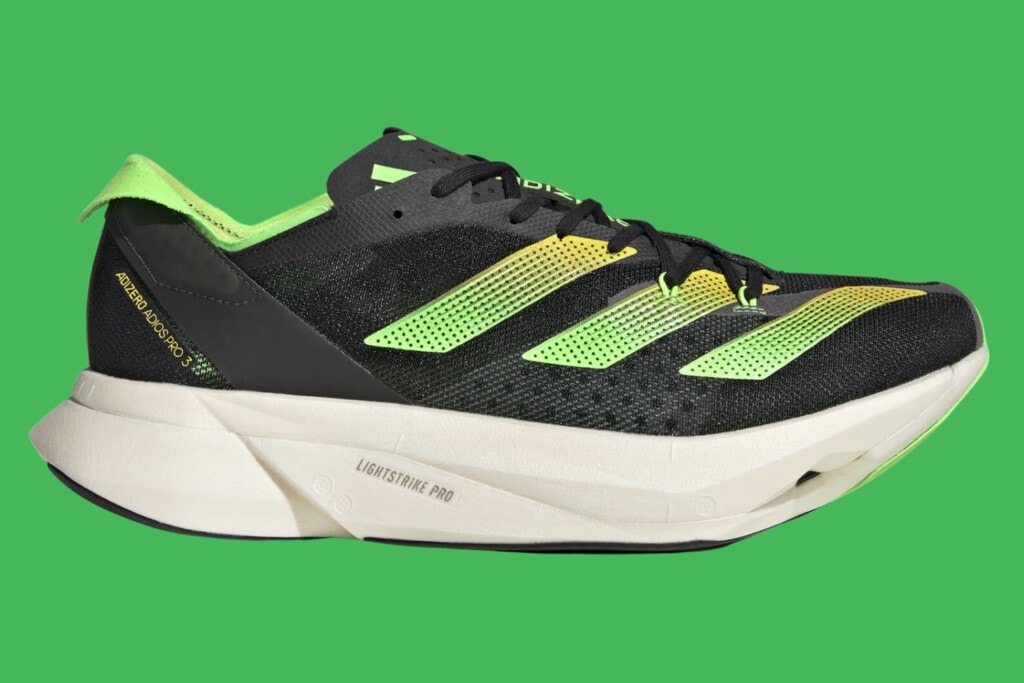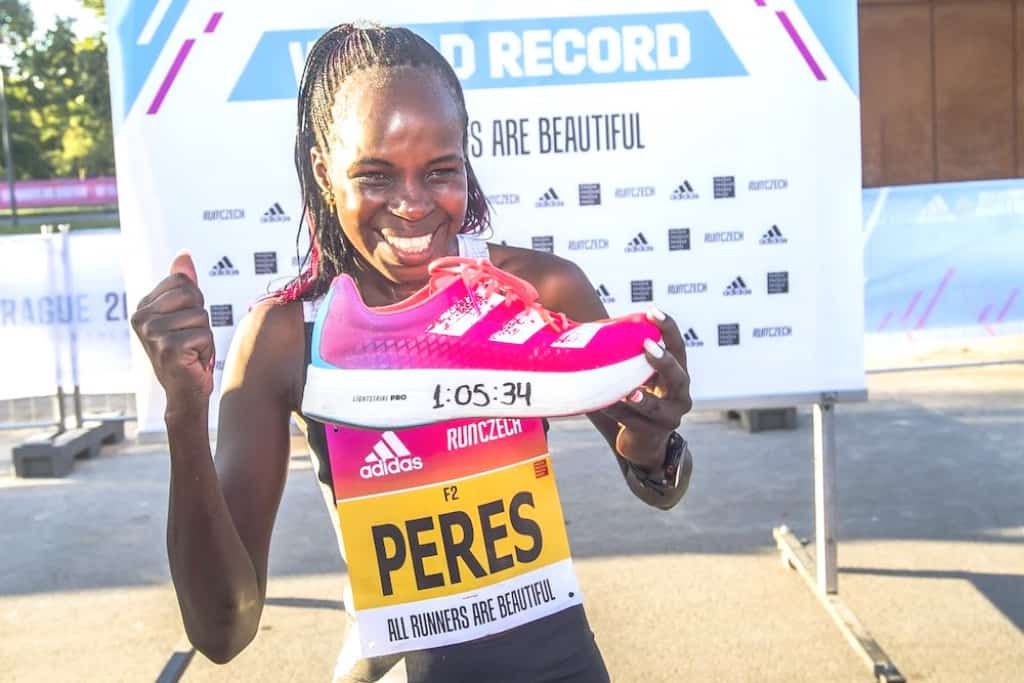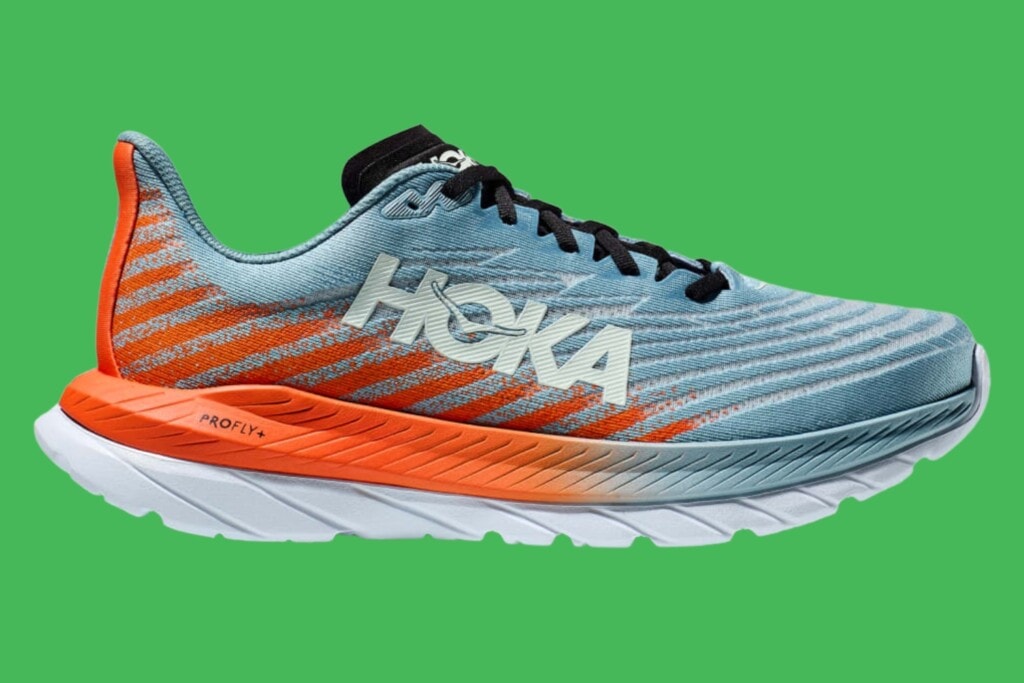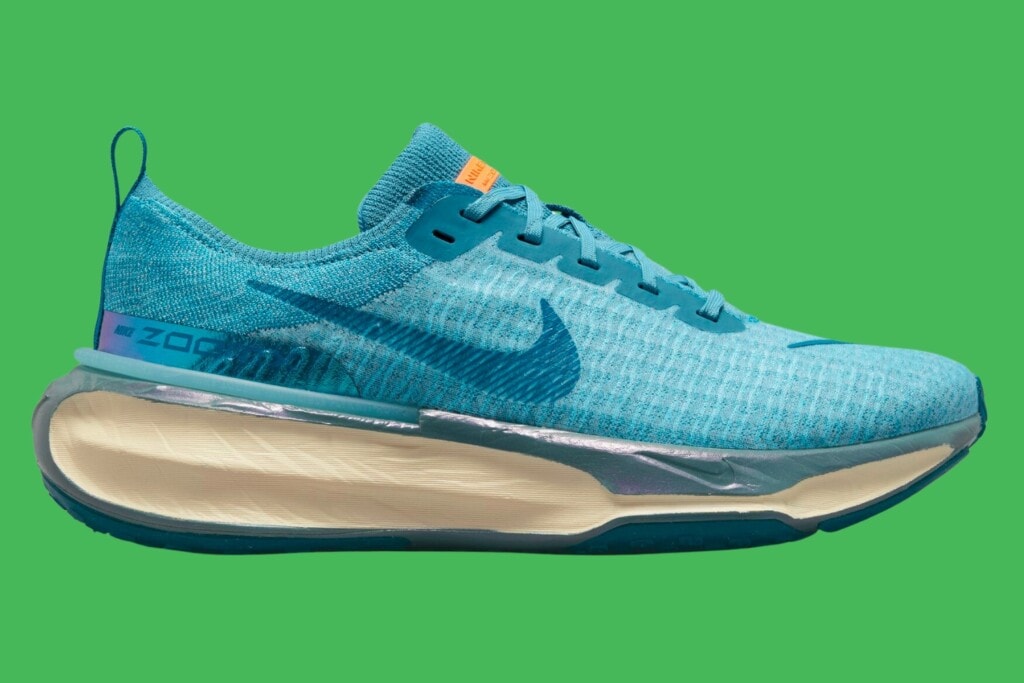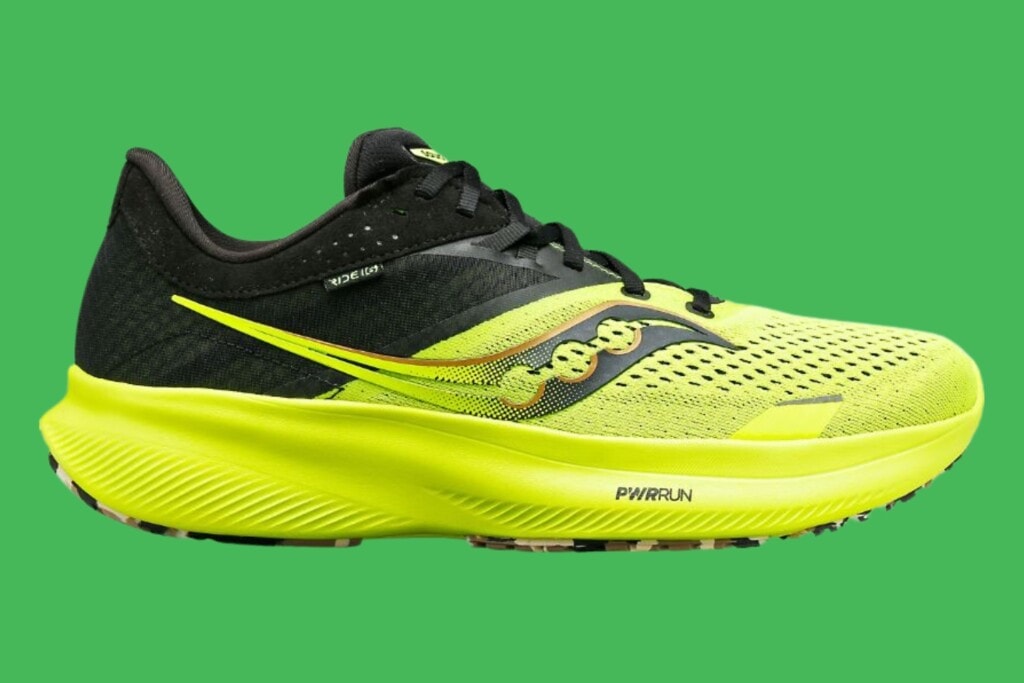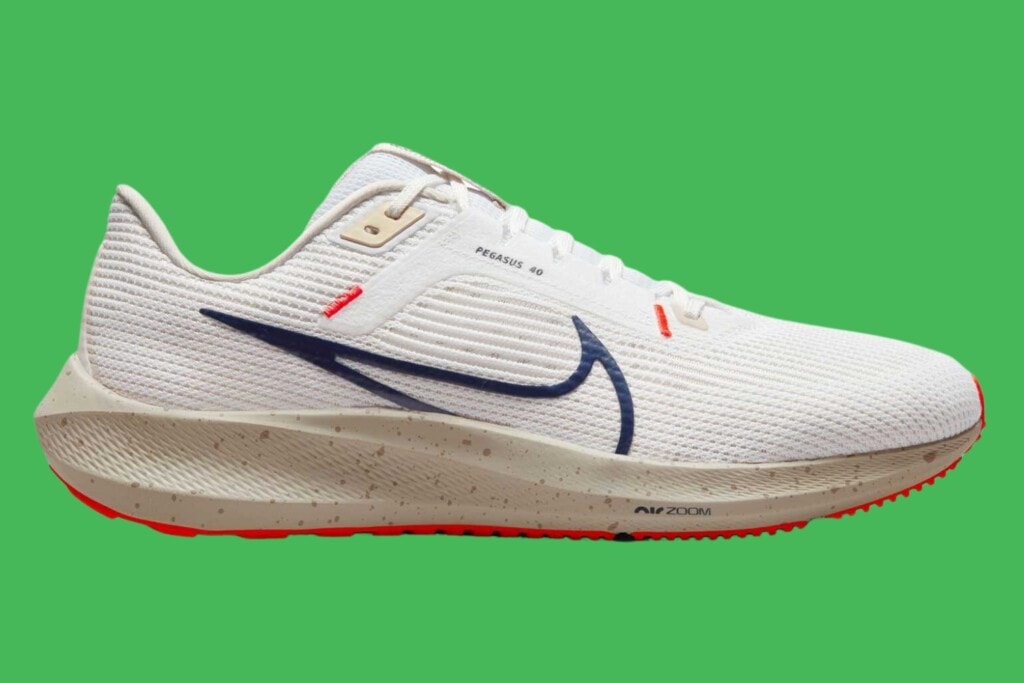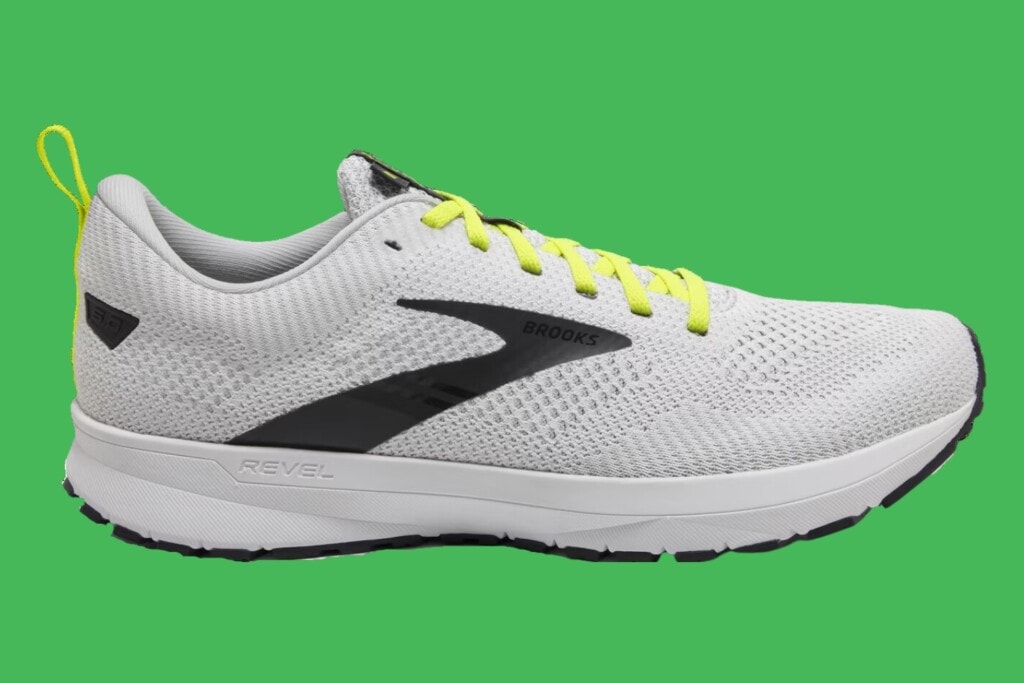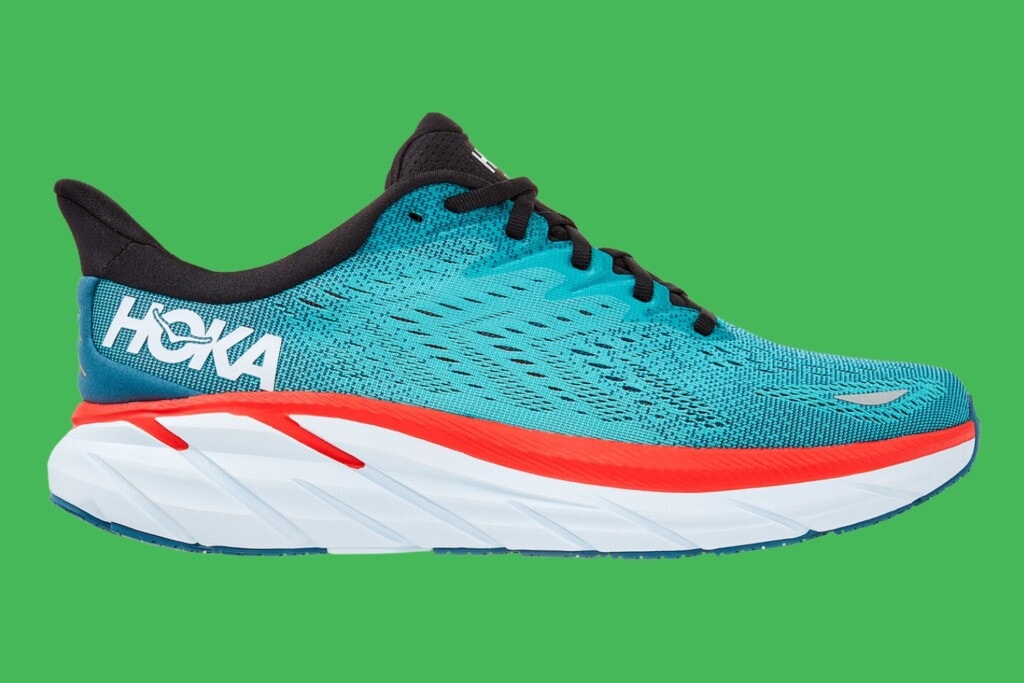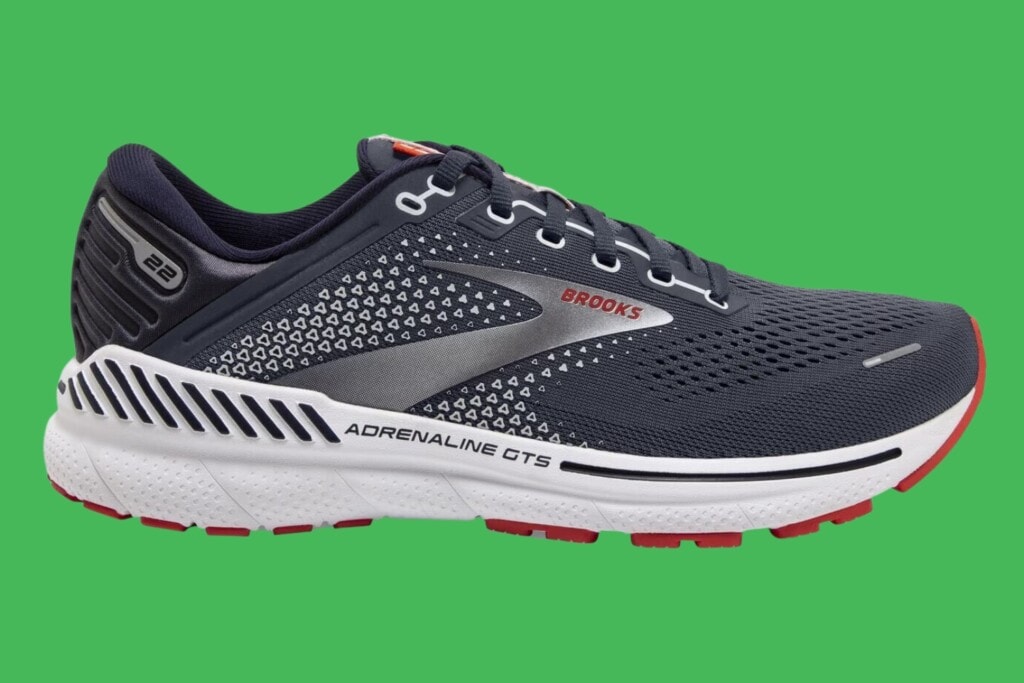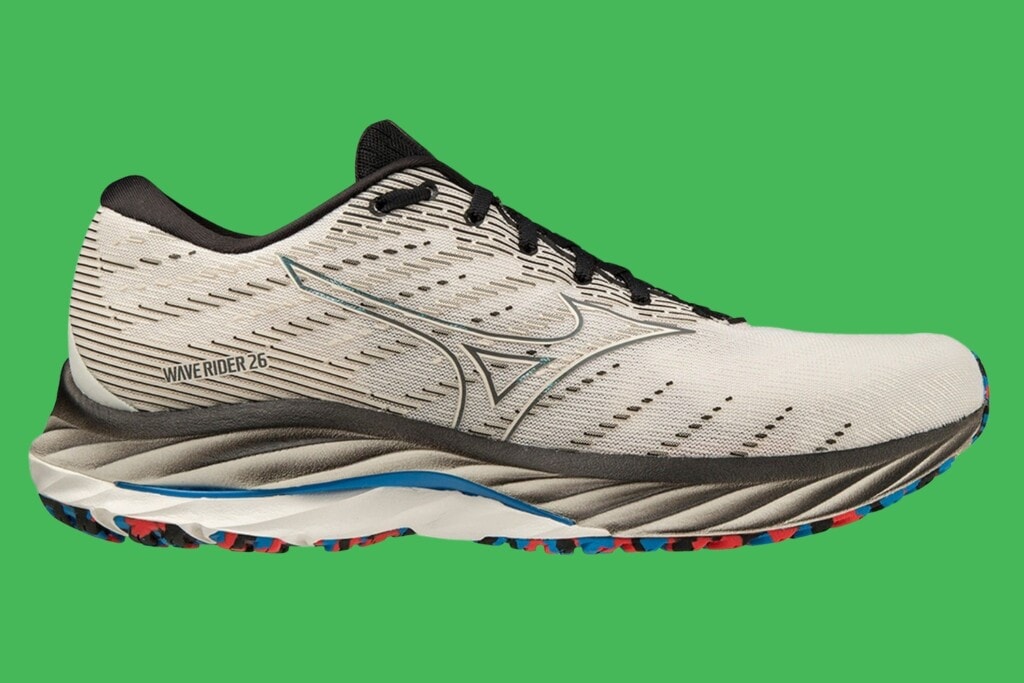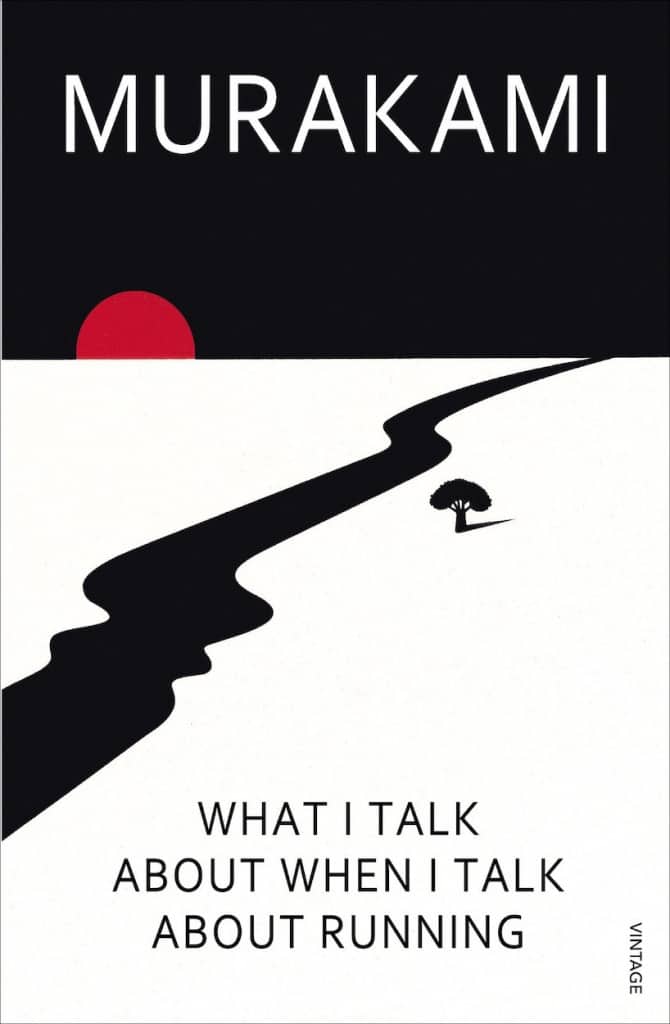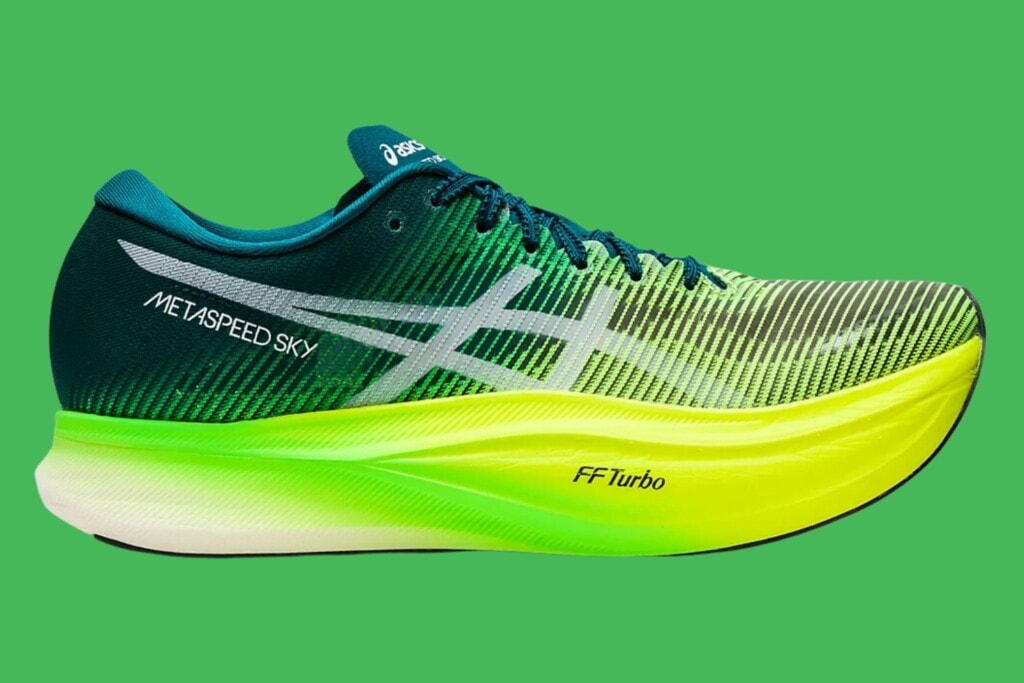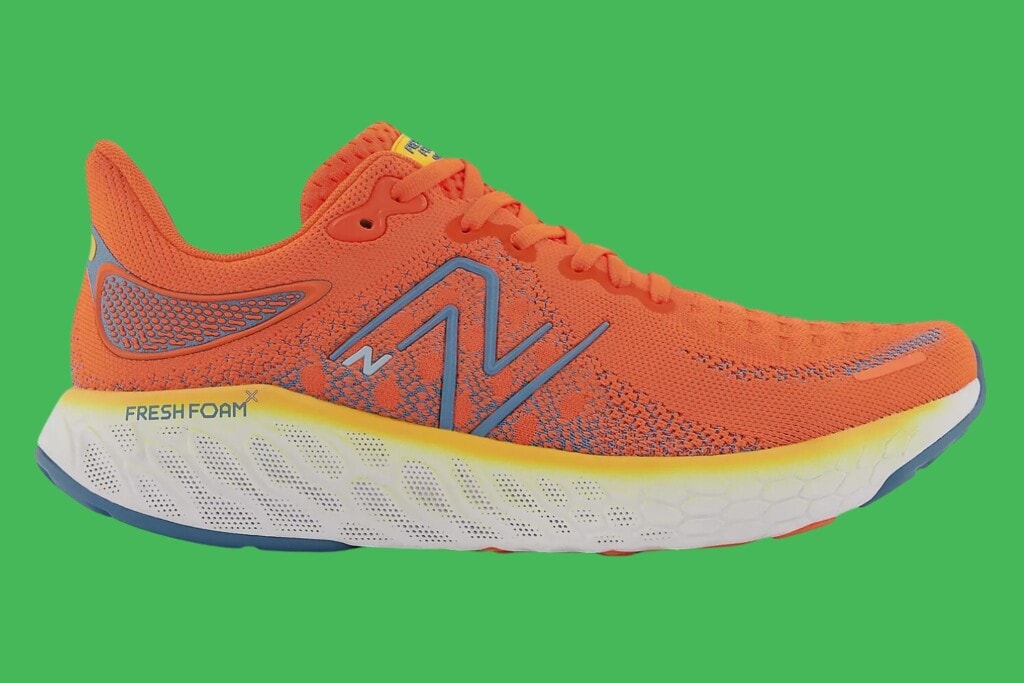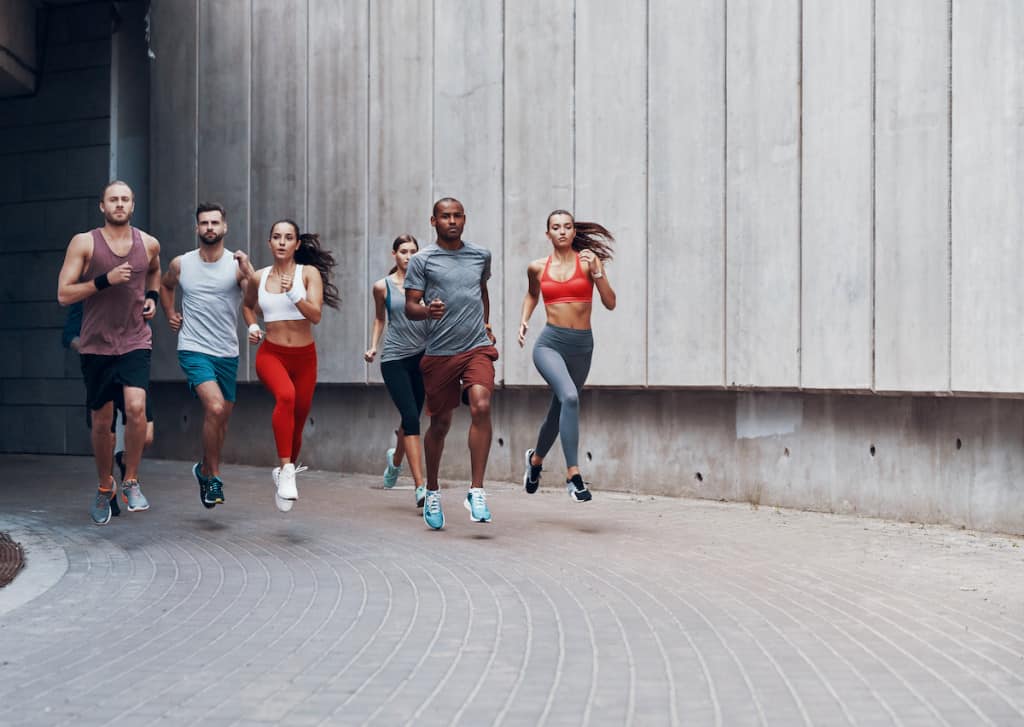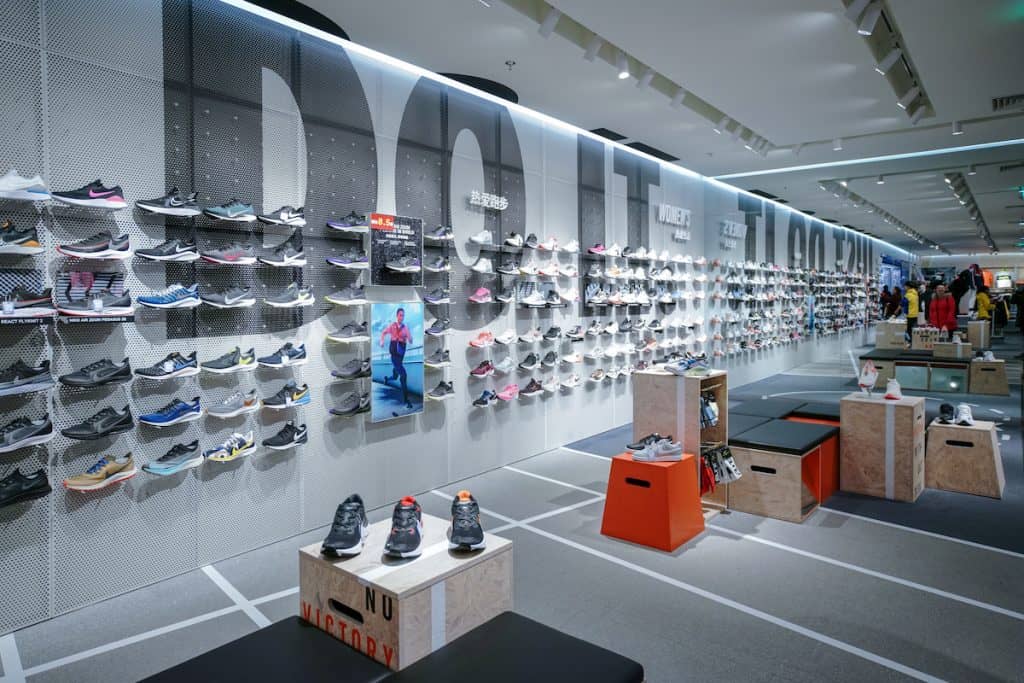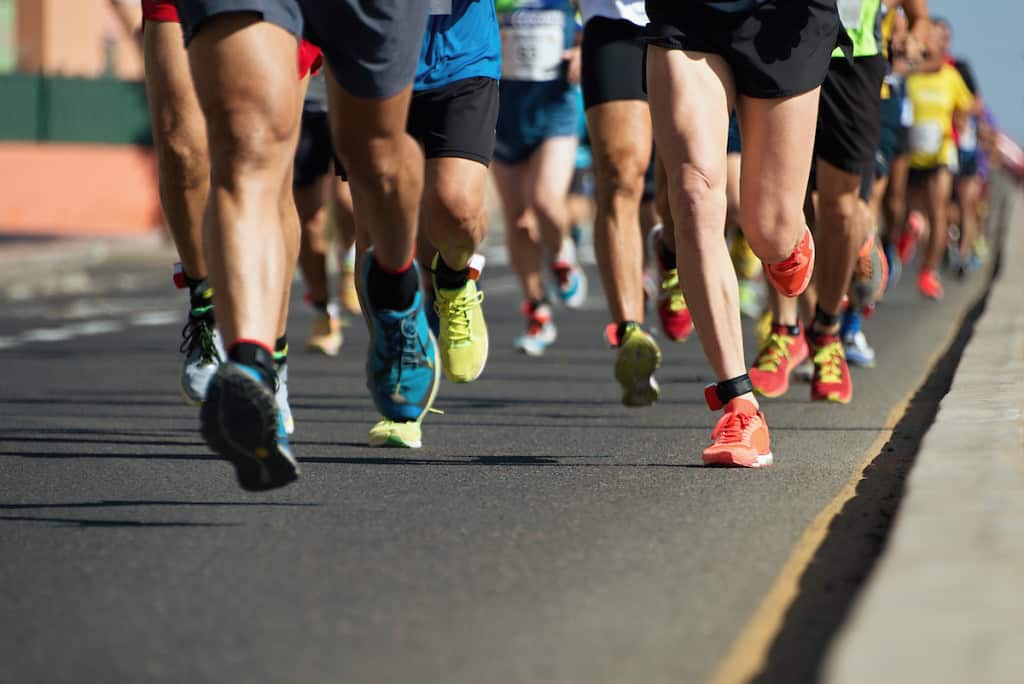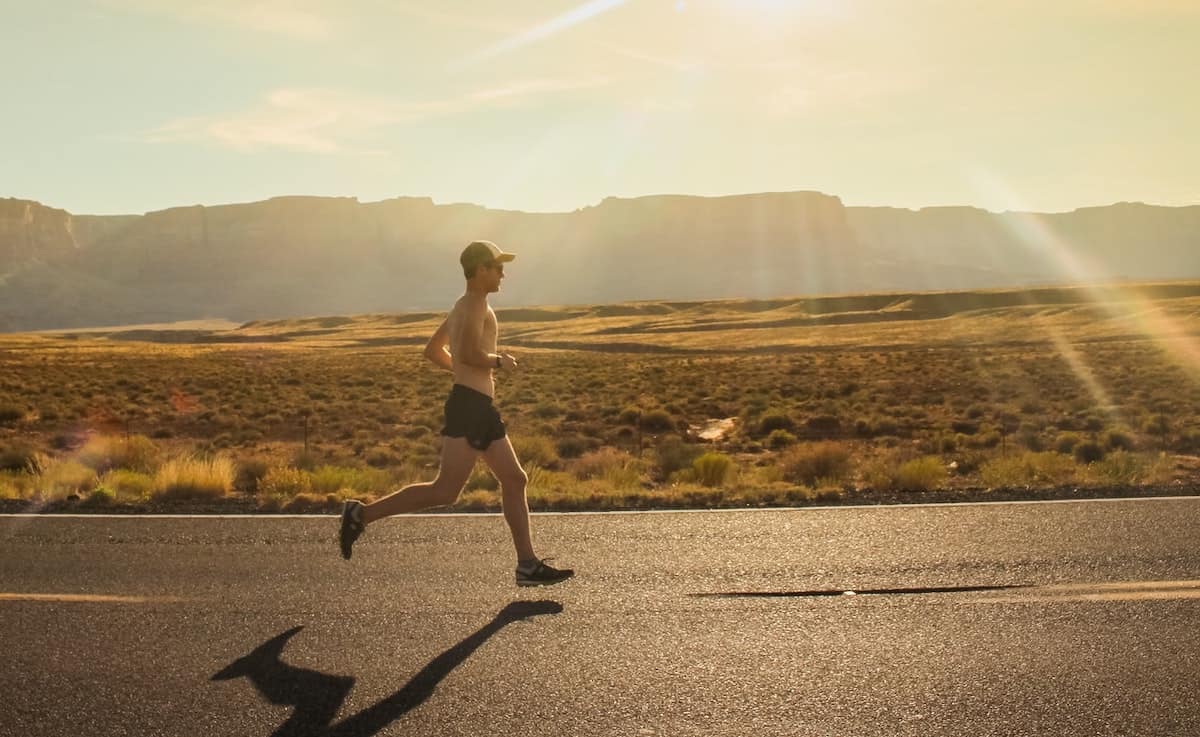
11 Best Running Shoes (2024 Updated Guide)
We are reader-supported and receive a commission when you buy through us. It does not influence our analyses.
Published on: 03/05/2022
Updated on: 08/01/2023
Which Shoes for Running?
In a hurry? Go directly to the top 11.
Finding the right running shoes for your running can be a daunting task, whether you are a beginner or an experienced athlete. It can be challenging to find your way around the dozens of running shoe brands and the hundreds of models that come out every year. In addition, the running shoe market is complex, with a variety of configurations that can make your head spin.
So we’ve put together this selection of the eleven best running shoes of 2024 (so far) with a variety of unanimously acclaimed models.
If you’re new to running, we suggest you look at our tips for choosing your first pair of running shoes. For more experienced runners, you can find precisely the right model for you by using the filters on our list pages (e.g., terrain, cushioning, drop, distance).
Trail runners, check out our selection of the best trail running shoes.
Our Method
Since 2017, the Runner’s Lab team has thoroughly evaluated running shoes by analyzing reviews from expert and casual athletes to reach a consensus and an overall score. Indeed, one runner’s review already offers a lot of information, but only a systematic review can allow us to draw conclusions applicable to the largest number of runners.
Furthermore, we check the claims of brands and testers against scientific evidence to clarify some controversial points such as the impact of the pronation type, the runner’s weight, the heel-to-toe drop, and many others. If something is not backed by a randomized controlled trial, then it should be taken with caution.
Our Selection of the Best 2024 Road Running Shoes for Men and Women
Comparison table
| Shoe | Heel height | Drop | Weight | Use | Cushioning | Carbon plate | Support | Best offer |
|---|---|---|---|---|---|---|---|---|
Adidas Adizero Adios Pro 3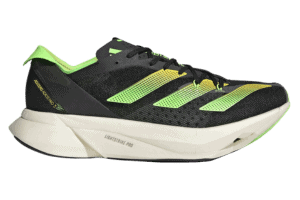 | 39 mm | 8 mm | 223 g/7.8 oz | Competition | Soft | ✔ | Neutral | Check price → |
Hoka Mach 5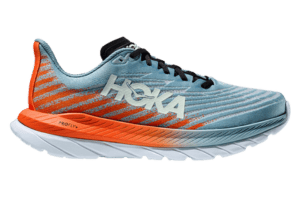 | 29 mm | 5 mm | 212 g/7.5 oz | Daily running | Firm | ❌ | Neutral | Check price → |
Nike ZoomX Invincible Run 3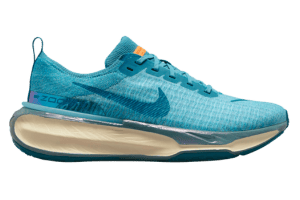 | 40 mm | 9 mm | 310 g/10.9 oz | Daily running | Soft | ❌ | Neutral | Check price → |
Saucony Ride 16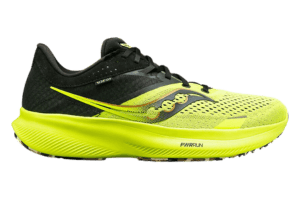 | 35 mm | 8 mm | 250g/8.8 oz | Daily running | Balanced | ❌ | Neutral | Check price → |
Nike Air Zoom Pegasus 40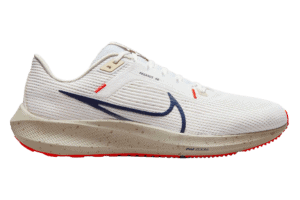 | 33 mm | 10 mm | 267 g/9.4 oz | Daily running | Balanced | ❌ | Neutral | Check price → |
Brooks Revel 5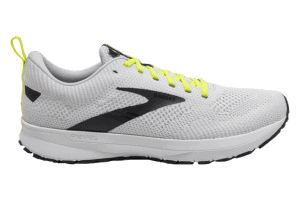 | 28 mm | 8 mm | 247 g/8.7 oz | Daily running | Balanced | ❌ | Neutral | Check price → |
Hoka Clifton 8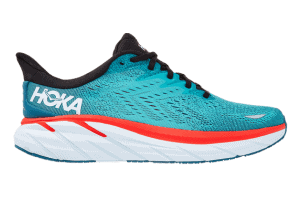 | 29 mm | 5 mm | 250 g/8.8 oz | Daily running | Soft | ❌ | Neutral | Check price → |
Brooks Adrenaline GTS 22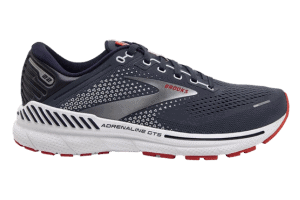 | 30 mm | 12 mm | 289 g/10.2 oz | Daily running | Soft | ❌ | Stability | Check price → |
Mizuno Wave Rider 26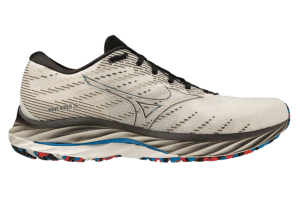 | 38,5 mm | 12 mm | 285 g/10 oz | Daily running | Balanced | ❌ | Neutral | Check price → |
Asics MetaSpeed Sky+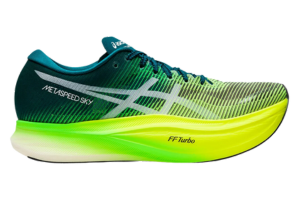 | 37 mm | 5 mm | 205 g/7.2 oz | Competition | Balanced | ✔ | Neutral | Check price → |
New Balance Fresh Foam 1080 v12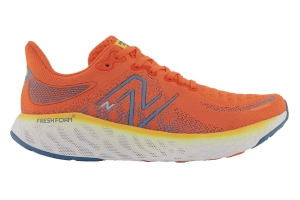 | 34 mm | 8 mm | 292 g/10.3 oz | Daily running | Balanced | ❌ | Neutral | Check price → |
1. Adidas Adizero Adios Pro 3: the best carbon-fiber plate racing shoe with soft cushioning
Facts
Stack: 39 mm (heel), 32,5 mm (forefoot)
Drop: 8 mm
Weight: 223 g/7.8 oz (unisex)
Cushioning: bouncy and soft ride, carbon plate
Workout: competition
Level: intermediate to advanced
Pronation: neutral
One could think that the German brand is pushing the envelope with not one but six carbon-fiber plates!
But the result speaks for itself: the Adios Pro provides a cushioning as effective as breathtaking! Is it the best running shoe available today? That’s a personal question, but we think it deserves the title. It may be a little heavier than the Nike Vaporfly, but the foot lockdown is more precise, and the cushioning is even more impressive.
The all-new Lightstrike Pro foam that equips the midsole offers a combination of shock absorption and bounce that has stunned more than one runner.
Adidas athletes Kibiwott Kandie and Peres Jepchirchir set new world records in the men’s and women’s half marathons with the original version of these running shoes.
More recently, Peres Jepchirchir won the gold medal at the Tokyo Olympics marathon with these shoes!
If you’re an experienced runner looking for race day shoes, the Adios Pro 3 might be the perfect allies!
2. Hoka Mach 5: the best shoe for snappy daily runs
Facts
Stack: 29 mm (heel), 24 mm (forefoot)
Drop: 5 mm
Weight: 212 g/7.5 oz (men), 193 g/6.8 oz (women)
Cushioning: firm
Workout: daily runs
Level: all
Pronation: neutral
At 7.5 oz/212 g (men), the Mach is undoubtedly one of the lightest trainers out there.
After a few disappointing versions, Hoka One One has turned this series into a star for comfort, versatility, and responsiveness. The ride is superb and can tackle anything, whether a short uptempo session or a long run for marathon prep.
The exposed EVA foam may seem like the weak link of the build, but it’s relatively sturdy overall.
An obvious choice if you don’t know which Hoka shoe to choose. Beware, though: the cushioning is a bit firm underfoot.
3. Nike ZoomX Invincible Run 3: the best max cushion running shoes for daily running
Facts
Stack: 40 mm (heel), 31 mm (forefoot)
Drop: 9 mm
Weight: 310 g/10.9 oz (men), 258 g/9.1 oz (women)
Cushioning: soft and bouncy
Workout: daily running
Level: intermediate to advanced
Pronation: neutral
Underneath its clunky ’90s sneaker look, the Invincible Run packs a killer cushioning that combines softness and bounce.
It’s an absolute blast during your daily sessions, at any pace, whether you are out for easy miles or vigorous tempo runs! The extra cushioning of the soft ZoomX foam also makes it suitable for recovery sessions. If there’s one word that runners use over and over again to describe the ride, it’s “fun.” The Invincible Run is a joy to run with and will make you appreciate even the fall early morning workouts over your warm bed.
With a 40 mm heel height, it’s the most cushioned daily trainer in our selection.
The price tag is steep, and testers note stability issues (avoid them if you’re an overpronator or supinator), but this exceptional running shoe is worth a try.
4. Saucony Ride 16: the best shoe for beginners
Facts
Stack: 35 mm (heel), 27 mm (forefoot)
Drop: 8 mm
Weight: 250 g/8.8 oz (men), 221 g/7.8 oz (women)
Cushioning: balanced
Workout: daily running
Level: any
Pronation: neutral
Every week, we help beginner athletes choose their first running shoes. The Saucony Ride is an option that comes up regularly. It’s one of these shoes where you can’t go wrong.
We prefer it to the Saucony Triumph for its better versatility and firmer cushioning, but the latter is also a solid choice.
It’s very comfortable and without frills; it’s a model that also has the advantage of being suitable for all foot shapes and sizes.
Also, its high-stack PWRRUN foam allows you to comfortably go the distance while keeping the shoe’s weight in check.
Last but not least, the rubber outsole makes it a durable shoe—we’d be surprised if you told us you didn’t reach 350 miles/600 km with them.
5. Nike Air Zoom Pegasus 40: the best running shoes for versatility
Facts
Stack: 33 mm (heel), 23 mm (forefoot)
Drop: 10 mm
Weight: 267 g/9.4 oz (men), 255 g/9 oz (women)
Cushioning: balanced
Workout: daily running
Level: any
Pronation: neutral
The Pegasus comes back every year in the shoe rankings because of its best-selling status. Let’s be honest: some years are better than others… 2021 was one of those years.
The refined upper offers more room without compromising the lockdown. The cushioning is still versatile despite a lack of responsiveness.
The main novelty in 2021 was the lightweight foam ZoomX that replaced the Duralon after many years of service. It’s a significant milestone as ZoomX is the latest and most advanced foam of Nike to date.
Like the Saucony Ride, it’s an excellent running shoe for beginners who want to play it safe for their first pair.
Plus, the Nike Air Zoom Pegasus is an affordable model that’s easy to find on sale even outside the major promotional periods like Black Friday.
6. Brooks Revel 5: the best cheap running shoes
Facts
Stack: 28 mm (heel), 20 mm (forefoot)
Drop: 8 mm
Weight: 247 g/8.7 oz (men), 227 g/ 8 oz (women)
Cushioning: balanced
Workout: everyday training
Level: any
Pronation: neutral
Other notable features: vegan, affordable shoe
A great surprise and relatively unknown underdog, the Brooks Revel 5 is our little secret that we’re happy to share with you.
It offers excellent comfort and versatility for all types of runs. Plus, at 8.7 oz/247 g (men), it’s a surprisingly lightweight shoe.
The testers loved it unanimously, and, as Brooks Running shoes, the quality is premium despite the very affordable price!
It’s a very good choice to start running or as a go-to everyday running shoe to alternate with. Plus, the Revel is a versatile athletic shoe that’s suitable for more than just running.
7. Hoka Clifton 8: the best shoes with soft cushioning
Facts
Stack: 29 mm (heel), 24 mm (forefoot)
Drop: 5 mm
Weight: 250 g/8.8 oz (men), 215 g/7.6 oz (women)
Cushioning: soft
Workout: daily running, recovery
Level: intermediate to advanced
Pronation: neutral
Other notable features: vegan upper
The Hoka Clifton is like Nike’s Pegasus: a very popular shoe that deserves its reputation.
If the Hoka Mach 5 feels too firm underfoot for you, then consider the Clifton 8 with its soft, high-stack cushioning.
Also, the engineered mesh upper is roomier (especially in the toe box) and accommodates wider feet while providing precise foot lockdown for all runners.
At just 8.8 oz/250 g (men), the Cliftons are agile lightweight running shoes that deliver a smooth and cushioned ride.
8. Brooks Adrenaline GTS 22: the best shoes for optimal support
Facts
Stack: 30 mm (heel), 18 mm (forefoot)
Drop: 12 mm
Weight: 289 g/10.2 oz (men), 253 g/8.9 oz (women)
Cushioning: soft
Workout: daily running
Level: intermediate to advanced
Pronation: overpronation
Other notable features: vegan, recycled materials
As we often repeat, there’s no scientific evidence that proves the effectiveness of stability running shoes to reduce the risk of injury.
That’s why, unlike many stores and brands, we don’t recommend taking your gait into account when choosing your running shoes.
However, some runners love them and wouldn’t consider running in neutral shoes. We have no problem with that: whatever works as long as you can run injury-free!
The Brooks Adrenaline GTS 22 is for these runners and provides the right amount of arch support to be effective without being too intrusive. These stability shoes are so comfortable that they are also very popular among neutral runners. The relatively lightweight design is another advantage, and the quality is top-notch. Go for it!
9. Mizuno Wave Rider 26: the best shoe with a classic configuration
Facts
Stack: 38,5 mm (heel) / 26,5 mm (forefoot)
Drop: 12 mm
Weight: 285 g/10 oz (men), 235 g/8.3 oz (women)
Cushioning: balanced
Workout: daily running
Level: any
Pronation: neutral
The Mizuno Wave Rider is the favorite shoe of Japanese novelist (and runner) Haruki Murakami!
Let’s pause to appreciate the gritty epitaph the writer is planning to have on his grave.
At least he never walked.
Haruki Murakami, What I Talk About When I Talk About Running
What will be yours?
Anyway, we digress—back to the shoes!
The Mizuno Wave Rider 26 is a shoe that has reinvented itself over time to keep its top-tier status.
This version 26 offers just as much high-stack cushioning as in the past, but with more flexibility. In addition, the shoe is lighter and continues to provide great comfort.
It’s a shoe with a traditional fit and ride. It makes it a good choice for runners looking for classic, timeless, simple, and effective shoes.
An excellent option for daily training!
10. Asics Metaspeed Sky+: the best carbon-plated shoe with rather firm cushioning
Facts
Stack: 37 mm (heel), 32 mm (forefoot)
Drop: 5 mm
Weight: 205 g/7.2 oz (unisex)
Cushioning: balanced with carbon plate
Workout: competition
Level: intermediate to advanced
Pronation: neutral
Other notable features: suitable for wide feet, recycled materials
We conclude this top 10 of the best running shoes as we started: with a carbon-fiber plate shoe.
Okay, let’s admit that we felt guilty for not including the Asics Gel Nimbus or the Asics Gel Cumulus in our selection of the best running shoes. They are good running shoes but heavy and uninspiring.
With the Asics Metaspeed Sky+, it’s a different story.
These popular racing shoes take the best of the Japanese brand and add a plate and a new highly responsive foam (FF Blast) to crush your marathon PB.
It’s one of Asics’ most expensive models, but unfortunately, that’s often the case with high-end racing shoes.
11. New Balance Fresh Foam 1080 v12: for fans of the American brand who are looking for comfort and versatility
Facts
Stack: 34 mm (heel) / 28 mm (forefoot)
Drop: 8 mm
Weight: 292 g/10.3 oz, 240 g/8.5 oz (women)
Cushioning: balanced
Workout: daily running
Level: any
Pronation: neutral
At first, we were reluctant to include the New Balance Fresh Foam 1080 v12 in our ranking.
Not that it’s a bad shoe (far from it!), but does it deserve to be in the top 10 when there’s already the Pegasus 39 and the Saucony Ride 16?
So after much thought, we decided to add it as a bonus, especially since it’s complementary for runners who don’t like the Pegasus or the Ride.
The FF 1080v12 is a versatile model with comfortable cushioning for long-distance runs and daily workouts.
Foot lockdown is less optimal than the v10, but the Fresh Foam X midsole is more responsive.
Finally, the cushioning to weight ratio is very good, with a weight of 292 g/10.3 oz (men) and a 34 mm heel height.
What about the other running shoes?
We have already stretched our selection by adding one shoe to our top 10. With hundreds of shoes available at any given time, we had to make a choice. There are some very popular shoes that we have decided not to include in this guide.
Ultimately, it’s very rare to find a poor running shoe, especially if you’re willing to spend over $80. At this price point, running shoes are reasonably sturdy and comfortable. But if you’re looking for the cream of the crop, then we believe our selection will give you that.
Here are a few more shoes with special mention:
- Nike ZoomX Vaporfly NEXT% 2 because it would be near perfect if not for its sloppy upper
- Brooks Ghost 14 for the series’ lifetime achievement
- Asics Gel Kayano 28 for its smooth and stable ride
- Saucony Endorphin Pro 2 because we can never have too many shoes with carbon plates
Our Guide to Choosing Your Running Shoes
What Are Road Running Shoes?
Road running shoes allow you to run in urban areas on surfaces like pavement.
Most road running shoes come with a rubber outsole to protect them from wear due to abrasion. It also enhances the traction to be able to run on both dry and wet surfaces.
Thus, they are ideal for running in the city. For uneven terrain or trails that are a bit technical, it’s best to opt for a trail shoe. If you often run in rainy weather, even on the road, it may be wise to choose waterproof shoes (usually in Gore-Tex).
Comfort First and Foremost!
If you are a beginner, choosing a shoe can take time. A simple test by trotting in the running store is not enough.
You will need at least one run to make sure there is no discomfort or pain.
We recommend that you choose a versatile neutral running shoe with a medium stack for a first shoe.
Comfort should be the #1 criterion. And we’re not just telling you this: a scientific study (1) has proven that shoe comfort reduces oxygen consumption. In other words, the more comfortable you are, the more efficiently you run!
The Nike Pegasus and Saucony Ride are safe choices for beginners. For more experienced runners, you can choose your shoes depending on your preferences and goals (e.g., daily running or competition, soft or firm cushioning, ground feel, or shock absorption).
To Cushion or Not to Cushion?
Roads are harder on the joints than dirt roads as the surface is denser. Therefore, it’s more comfortable to opt for cushioning, even if it’s moderate.
Minimalist running and asphalt are not incompatible (with one notable exception, see below). Still, in the beginning, it’s better to favor softer surfaces such as smooth trails, sand, or grass if you plan to go running barefoot-style.
However, cushioning remains an ongoing debate with no clear answer. The only thing you need to remember (tell your friends) is that you should avoid minimalist shoes (very thin sole, less than 15 mm) if you weigh more than 157 lbs/71 kg.
Indeed, it’s the only conclusion based on a scientific study (randomized controlled trial) (2).
For the rest, it’s common to hear that you need more cushioned shoes if you are a heavy runner, but it’s more about durability than risk of injury. So, if you weigh over 176 lbs/80 kg, your shoes are more likely to last a long time if their cushioning is higher.
However, besides the stack height, you should also look at the density of the midsole foam: the denser it is (think TPU, Pebax) and the better durability will be. Conversely, a low-density (=soft) midsole, like EVA foam, tends to be more fragile.
For more recommendations, check out our selection of the best running shoes for heavy runners.
Don’t Worry Too Much About Your Pronation Type
By now, you’ll have noticed that we’ve spared you all the talk about the type of pronation and arch height (e.g., flat feet and overpronation, high arch and supination).
Overpronation is not an imaginary issue. There is a small but statistically significant risk of overuse injury for overpronators (3).
However, to our knowledge, no study proved that support shoes could decrease this higher risk. If anything, one research has concluded that runners who overpronate didn’t have a higher risk of injury when using neutral shoes (4). Nonetheless, one study has shown that motion control shoes could decrease the risk of injury for overpronators (5).
It does not mean that running shoes for overpronation are useless. In the absence of clear findings, it simply becomes a personal choice based on your experience. And, again, it all goes back to comfort. We only recommend them to experienced runners.
If in doubt, we recommend neutral running shoes. They also tend to be good shoes for supination!
Just Drop It
Have you ever heard of the heel-to-toe drop? Simply put, it’s the difference in height between the heel and the forefoot. If a shoe has a stack height of 26 mm under the heel and 22 mm under the forefoot, the drop is 4 mm. A shoe with a higher drop will elevate your heel more while running.
What’s funny with the heel-to-toe drop is that most shoes used to have a relatively high drop (10 or 12 mm was usual in the running shoe world), but it has drastically decreased in the last years. We can bet that the success of Hoka and Altra shoes has something to do with it. The first one mainly offers low-drop shoes (4-5 mm drop), while the second is a fierce advocate of zero-drop shoes (zero-drop meaning that the foot is flat on the ground). As a result, the standard drop is now around 8 mm. Even Asics has started to embrace a lower drop on its latest series like the MetaSpeed Sky (5 mm).
Is there any science behind these trends? Not really. So far, the only randomized controlled trial study so far (6) didn’t find any meaningful differences between the different drops in terms of injury risk.
As a result, we recommend starting with something standard (8-10 mm) and adjusting depending on your experience.
Frequently asked questions (FAQs)
All running shoes are available for men and women. Some are unisex, while others display a specific configuration.
For example, the Pegasus has a different cushioning: it offers women more softness under the foot.
However, this does not influence the shoe’s overall score. So, our selection of the top women’s running shoes is the same as the men’s.
It’s not essential, but it’s much better. Even if you find your running shoes comfortable, they are not built to resist the abrasion caused by running on the road.
A running shoe contains a midsole to absorb impact and an outsole to protect the shoe from the asphalt. Thus, this configuration aims to last for several hundred miles, unlike a traditional sports shoe.
Here are some other guides that may interest you:
- The Best Treadmill Running Shoes
- The Best Motion-Control Running Shoes
- The Best Triathlon Running Shoes
References
1. Improved footwear comfort reduces oxygen consumption during running
Geng Luo, Pro Stergiou, Jay Worobets, Benno Nigg and Darren Stefanyshyn (2009)
Footwear Science
https://www.tandfonline.com/doi/abs/10.1080/19424280902993001
2. The long-term effect of minimalist shoes on running performance and injury: design of a randomised controlled trial
British Journal of Sports Medicine
Joel Fuller, Dominic Thewlis, Margarita Tsiros, Nicholas Brown, and Jonathan D. Buckley
https://www.ncbi.nlm.nih.gov/pmc/articles/PMC4550712/
3. Association between foot type and lower extremity injuries: systematic literature review with meta-analysis
Journal of Orthopaedic & Sports Physical Therapy
Jasper Tong, Pui Kong
https://pubmed.ncbi.nlm.nih.gov/23756327/
4. Foot pronation is not associated with increased injury risk in novice runners wearing a neutral shoe: a 1-year prospective cohort study
British Journal of Sports Medicine
Rasmus Oestergaard Nielsen, Ida Buist, Erik Thorlund Parner, Ellen Aagaard Nohr, Henrik Sørensen, Martin Lind, Sten Rasmussen
https://bjsm.bmj.com/content/48/6/440.abstract
5. The effectiveness of motion control systems in preventing running-related injuries: A double-blind randomised controlled trial
Malisoux et al. (2015). Luxembourg Institute of Health.
https://www.researchgate.net/publication/343336160_The_effectiveness_of_motion_control_systems_in_preventing_running-related_injuries_A_double-blind_randomised_controlled_trial
6. Influence of the Heel-to-Toe Drop of Standard Cushioned Running Shoes on Injury Risk in Leisure-Time Runners A Randomized Controlled Trial With 6-Month Follow-up
The American Journal of Sports Medicine
Laurent Malsioux, Nicolas Chambon, Axel Urhausen, Daniel Theisen (2016)
http://journals.sagepub.com/doi/abs/10.1177/0363546516654690

